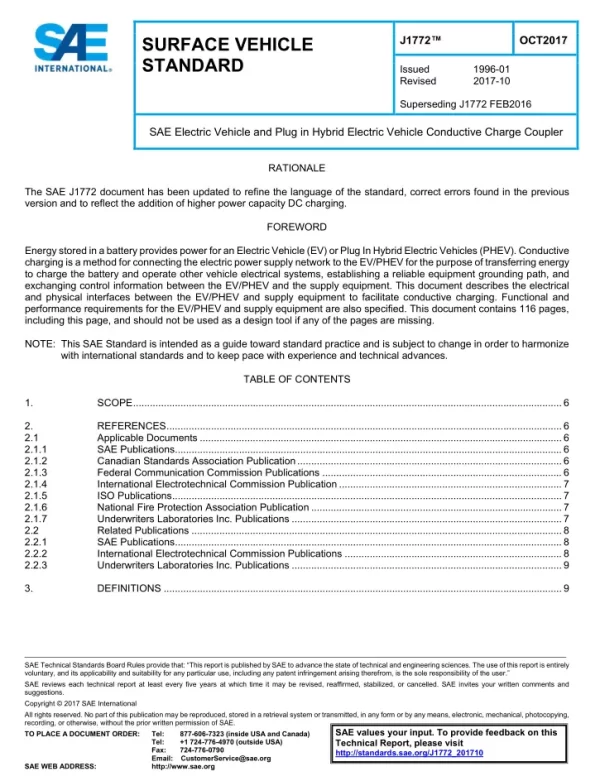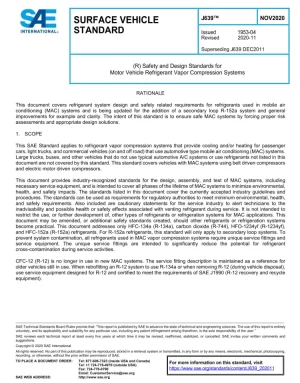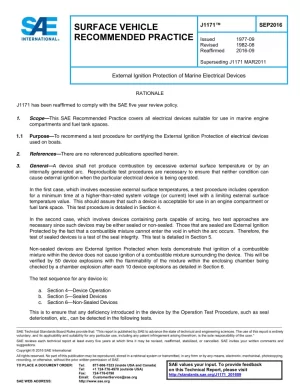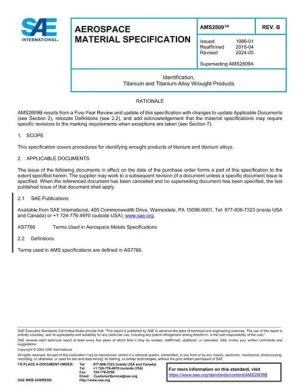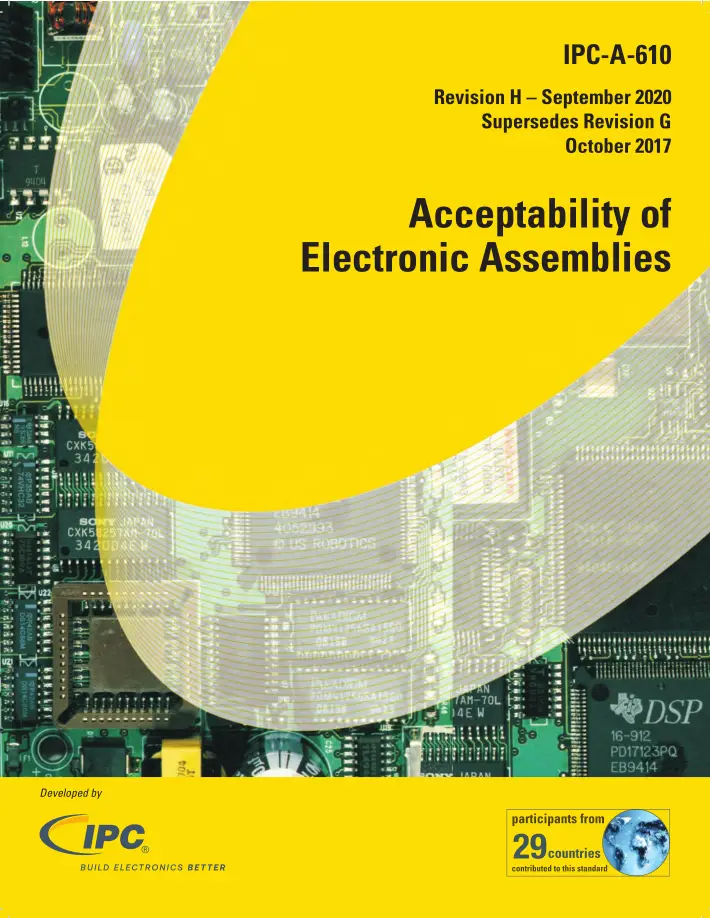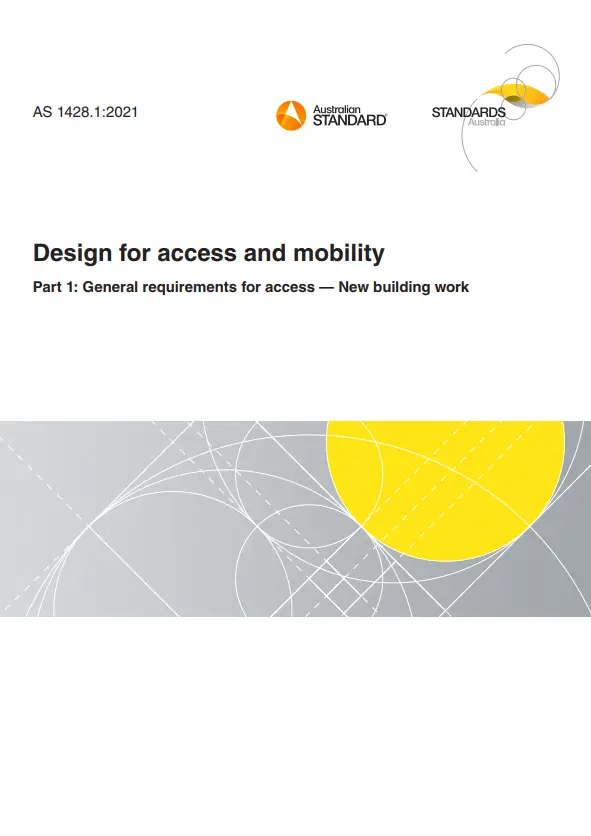SAE J1772, 2017 Edition – SAE Electric Vehicle and Plug in Hybrid Electric Vehicle Conductive Charge Coupler
The SAE J1772 document has been updated to refine the language of the standard, correct errors found in the previous version and to reflect the addition of higher power capacity DC charging.
Energy stored in a battery provides power for an Electric Vehicle (EV) or Plug In Hybrid Electric Vehicles (PHEV). Conductive charging is a method for connecting the electric power supply network to the EV/PHEV for the purpose of transferring energy to charge the battery and operate other vehicle electrical systems, establishing a reliable equipment grounding path, and exchanging control information between the EV/PHEV and the supply equipment. This document describes the electrical and physical interfaces between the EV/PHEV and supply equipment to facilitate conductive charging. Functional and performance requirements for the EV/PHEV and supply equipment are also specified. This document contains 116 pages, including this page, and should not be used as a design tool if any of the pages are missing.
NOTE: This SAE Standard is intended as a guide toward standard practice and is subject to change in order to harmonize
with international standards and to keep pace with experience and technical advances.
General Product Information:
| Revision | 2017 Edition |
| Document Type | |
| Document Language | English |
| Pages | 116 |
| Publisher | SAE International (SAE) |
| Status | Current |

